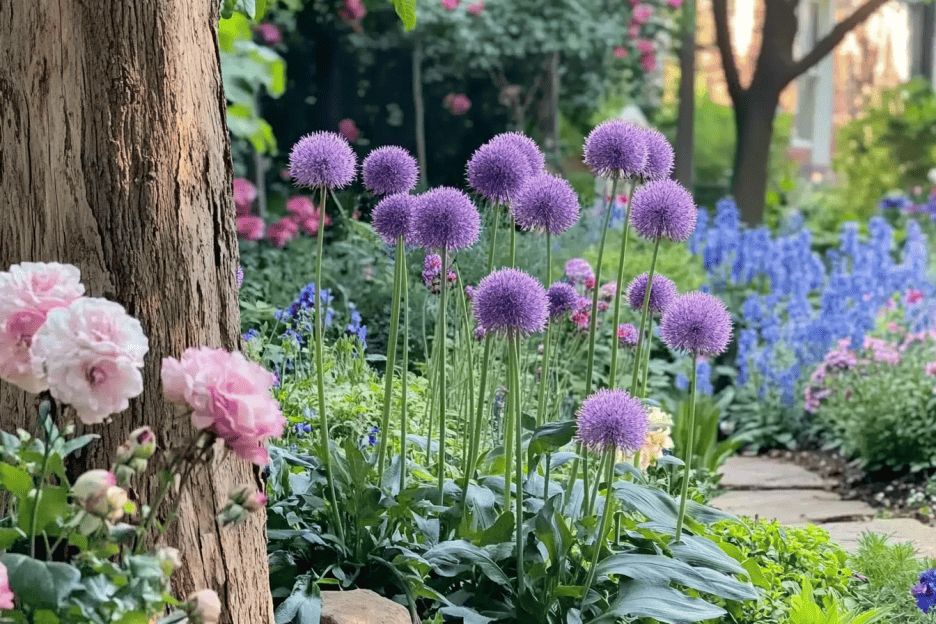How to create a perennial flower garden that adds beauty and longevity to your landscape is simpler than you might think. With proper planning and care, perennial gardens offer year-round color and require minimal maintenance. This guide will walk you through each step of creating your own stunning perennial garden, from planning to planting and ongoing care.
1. Introduction to Perennial Gardening
Why Choose Perennials for Your Garden?
Perennials return year after year, making them a cost-effective and low-maintenance choice for gardeners. Once planted, these flowers provide long-lasting beauty with less effort compared to annuals.
Understanding Perennials
Perennials are plants that live for more than two years, blooming each season. They come in a wide variety of colors, sizes, and textures, making them perfect for creating dynamic and interesting garden designs.
2. Planning Your Perennial Flower Garden
Step 1: Assess Your Garden’s Light and Space
Determine the light exposure in your garden—full sun, partial shade, or full shade—and assess the available space. This will help you select the right perennials for each area of your garden.
Step 2: Find Your Growing Zone
Knowing your USDA hardiness zone is essential to choosing plants that will thrive in your region. Perennials that suit your zone will survive winter and return in the spring.
Step 3: Prepare Your Garden Bed
Prepare your soil by adding compost or organic matter to improve drainage and fertility. A healthy soil base is crucial for the long-term success of your perennials.
Learn more about preparing garden beds and growing flowers in this guide.

3. Choosing the Right Perennials
Step 4: Popular Perennials for Stunning Displays
Best Perennials for Sun and Shade
- Sun-loving: Coneflowers, Black-eyed Susans, and Lavender.
- Shade-tolerant: Hostas, Ferns, and Astilbe.
Long-blooming Perennials for Year-Round Interest
- Examples: Daylilies, Salvia, and Coreopsis offer extended bloom periods, providing continuous color throughout the season.
Low-Maintenance Perennials
- Examples: Sedum, Peonies, and Catmint are easy-care plants that require minimal upkeep while providing lasting beauty.
Step 5: Arranging Your Plants for Maximum Impact
Group perennials by their color, height, and texture. Place taller plants toward the back of borders and shorter ones in front for a layered, dynamic look. Mix colors to create visual interest and texture variety.
4. Planting Your Perennial Garden
Step 6: Proper Spacing for Growth
Give your perennials enough room to grow. Crowded plants can lead to poor air circulation and disease. Follow the recommended spacing guidelines based on the plant variety.
Step 7: Planting Techniques for Success
Dig holes that are twice as wide as the root ball but no deeper. Ensure that the crown of the plant sits level with or just above the soil surface to prevent rot.
Step 8: Adding Mulch and Watering
Apply mulch around your newly planted perennials to retain moisture, reduce weeds, and regulate soil temperature. Water deeply right after planting and continue to keep the soil consistently moist during the first year.
5. Caring for Your Perennial Garden
Watering and Fertilizing
During the first year, perennials need regular watering to establish strong root systems. Afterward, they require less frequent watering. Apply a balanced, slow-release fertilizer in early spring to encourage healthy growth.
Pruning and Deadheading
Prune and deadhead spent blooms to promote new growth and extended blooming. Deadheading also keeps your garden looking tidy.
Seasonal Maintenance Tips
Perennials may require different care depending on the season. Mulch in the winter for protection, cut back dead foliage in the fall, and divide overcrowded plants in early spring.
6. Designing with Perennials for a Year-Round Garden
Step 9: Timing Your Blooms for Continuous Color
Select a variety of perennials that bloom at different times of the year to ensure constant color. Combine early bloomers like tulips with mid-season flowers like irises and late bloomers like asters for a garden that shines from spring to fall.
Step 10: Creating Visual Interest with Foliage and Texture
Incorporate plants with attractive foliage and varying textures to add depth and interest, even when the flowers aren’t blooming. For example, mix ferns, hostas, and ornamental grasses for unique visual appeal.
7. Common Mistakes to Avoid
Overcrowding Your Plants
While it’s tempting to fill up space quickly, overcrowded plants struggle for nutrients, light, and water. Proper spacing is crucial to ensuring healthy growth and preventing disease.
Ignoring Soil and Light Requirements
Each perennial has specific soil and light needs. Planting a sun-loving perennial in the shade or ignoring poor soil conditions can lead to weak growth and fewer blooms.
8. Conclusion: Enjoying Your Stunning Perennial Garden
Long-Term Care and Enjoyment
With proper planning, planting, and minimal maintenance, your perennial garden will reward you year after year with vibrant blooms. Take the time to water, prune, and care for your perennials, and they will thrive for seasons to come.
Frequently Asked Questions
Q: How often should I water my new perennials?
A: Water deeply once or twice a week during the first year. After they are established, they will need less frequent watering.
Q: Which perennials are best for beginner gardeners?
A: Low-maintenance perennials like Coneflowers, Sedum, and Daylilies are great choices for beginners.
For more tips on garden design and plant care, check out this perennial gardening guide.


1 thought on “How to Create a Stunning Perennial Flower Garden: A Step-by-Step Guide”